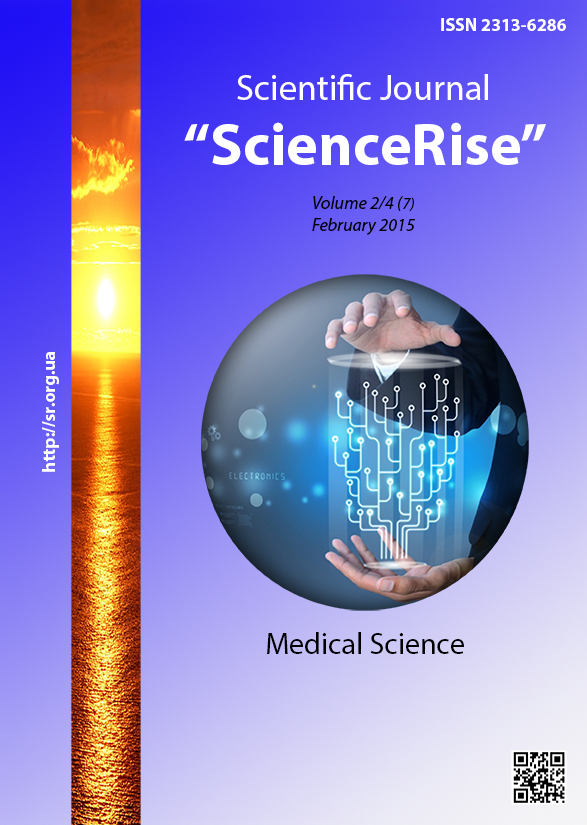The chronic pain in back and new methods of treatment
DOI:
https://doi.org/10.15587/2313-8416.2015.37409Keywords:
chronic pain in back, curation, XeominAbstract
Aim The study of the prevalence causes the formation of chronic vertebrogenic pain syndromes (СVPS), their clinical course, determining the optimal methods of treatment.
Methods The observation of the 31 patients with chronic vertebrogenic pain syndrome was led. It is identified neuroimaging changes and leading clinical and neurological syndromes. An objective assessment of the presence of pain confirmed using a visual analog scale and the test for the assessment of pain and functional economic status in chronic backpain. All patients were devided into 2 groups.
Results The duration of chronic vertebrogenic pain patients studied were: from 3 to 5 years in 11 (35 %), more than 10 years in 13 (42 %), more than 15 years – in 7 (23%) patients. A significant duration of the pain syndrome was the reason for seeking care. Comparing the results of treatment in the two groups showed a significant benefit in the primary group, in which after 10 days the patients did not report pain and returned to work. In the control group revealed a statistically significant reduction of pain syndrome, the condition of patients required further rehabilitation.
Conclusions It is identified the best effect with the use of modern methods of treatment of reflex muscle-toxic with Xeomin in comparison with traditional methods
References
Barantsevich, E. (2012). Treatment options for chronic pain in lumbosacral radiculopathy. Doctor, 11, 13–19.
Vorobievа, O. (2014). Back Pain – "flags" danger. Directory of polyclinic physician, 1, 26–29.
Kamchatnov, P. R. (2006). Spondylogenic dorsopathies. Doctor, 5, 26–28.
Melkumova, K. A. (2009). Chronic pain and cognitive. Nevrol. Magazine, 2, 41–48.
Damulin, I. V. (2009). Back Pain: clinical and therapeutic aspects. Ter. Archive, 6, 78–82.
Danilov, A. B. (2008). Psychopathology and chronic pain. Consilium medicum, 2, 50–55.
Lipai, E. (2007). Features instrumental diagnostic studies in multilevel discogenic lesions of the lumbar spine in three or more levels. Hospital Gazette, 1, 7
Putilina, M. V. (2011). Vertebrogenic chest pain. Consiliummedicum, 2, 5–10.
Jensen, S. (2004). Back pain – clinical assessment. Aust. Fam. Physician, 33, 93–401.
Bakker, E. W. (2009). Spinal mechanical load as a risk factor for low back pain: a systematic review of prospective cohort studies. Spain, 34, 81–93. doi: 0.1097/brs.0b013e318195b257
Downloads
Published
Issue
Section
License
Copyright (c) 2015 Irina Dolgova, Natalya Chigrina, Olga Minaeva, Irina Vishlova

This work is licensed under a Creative Commons Attribution 4.0 International License.
Our journal abides by the Creative Commons CC BY copyright rights and permissions for open access journals.
Authors, who are published in this journal, agree to the following conditions:
1. The authors reserve the right to authorship of the work and pass the first publication right of this work to the journal under the terms of a Creative Commons CC BY, which allows others to freely distribute the published research with the obligatory reference to the authors of the original work and the first publication of the work in this journal.
2. The authors have the right to conclude separate supplement agreements that relate to non-exclusive work distribution in the form in which it has been published by the journal (for example, to upload the work to the online storage of the journal or publish it as part of a monograph), provided that the reference to the first publication of the work in this journal is included.

